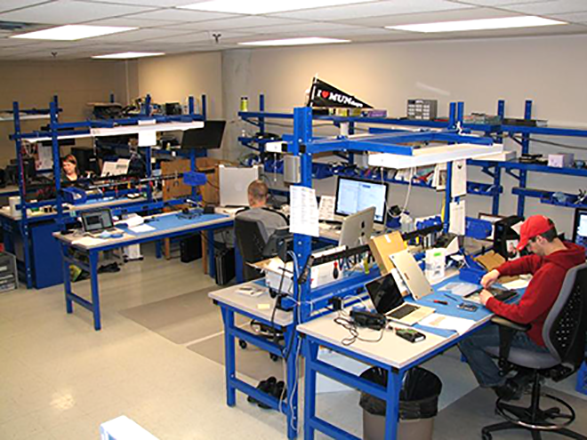You are here
The future of working and learning from home
By Jean-Claude Elias - Jun 03,2020 - Last updated at Jun 03,2020

AFP photo
Long before the COVID-19 crisis, working from home by smartly using a computer and the Internet was a system that had already been adopted by a non-negligible number around the world. The technique and the concept therefore are nothing new. The lockdown situation that we have all experienced since about mid-March has done nothing but to increase this number. Admitted, the increase was significant, massive, overwhelming – a real game-changer.
Perhaps the greatest and least expected change, compared to the past, is the “learning from home” method that countless students were pushed to. Willy-nilly, all generations found themselves staying at home, using the remote system and trying to learn it well, to make the best possible use of it, and to get familiar with the various tools that it implies, be it software applications or hardware accessories.
Whereas most knew Skype, few had ever heard of Zoom, for instance. Now even 10-year old children talk about Zoom as casually as if it were their schoolmate, their parents, their teacher or… their classroom.
So it is agreed, the sum of “working from home” and “learning from home” now involves an incredible number of people in the world. Many articles, analyses and reviews on the web tell you now that even once this crisis is over, they will be no turning back, and that a majority will keep working and/or learning from home, given the advantages they discovered. It is hard not to agree with this.
At this point, perhaps the best thing to do for this kind of future vision and way of living is already to draw some lessons from the past couple of months.
There are obvious points here and then some less obvious ones. The first obvious one is that a very fast Internet connection is the starting point of everything. The minimum acceptable is 200 Mbps and is the kind provided by fibre optic subscriptions to the network. Faster is better, of course. Slower becomes a matter of good or bad luck.
There are other technical considerations too. The best possible camera, microphone and speakers have also become a must. Most laptops still are fitted with average to good such hardware. Typically you would have to get additional, external cameras, microphone and speakers for a satisfying experience, one that will make working or learning remotely a pleasure, one that will make you look forward to it day after day, instead of fearing it. It is very likely that the makers of laptop models to come will take this into consideration.
Is one camera enough? Maybe in some cases, but in many others it is not. When you are teaching someone remotely, you want them to see you. You also want them to see some documents stored your computer and that you will display on your screen — at the same time! You may also need to show them the very paper you are writing on and that you placed on your desk, for a more personalised, a more accurate explanation of the lesson.
This is impossible to do with just one camera. Think of the remote lesson you are giving or attending as a kind of film production. Do pro moviemakers use only one camera? At present few if any software applications for remote meeting can handle multiple cameras smoothly and friendly.
The last and certainly not the least of the lessons to learn is the case of those who are not particularly technically minded and who find it hard to handle all these tools comfortably. This group is not negligible and it includes the very young, those say under the age of 12, and adults who just don’t feel confident with the technology.
For dealing regularly with people in this specific group, I know that meeting with them remotely comes with its daily load of problems, ranging from poor or no sound at all, off-centre image, display of the wrong screen and even random involuntary disconnection from the meeting or the lesson every now and then. Not to mention the cases when just they cannot start the scheduled meeting at all.
It is possible to alleviate the pain for this group by designing for them hardware and software tools that will be easier to use, and at the same time by giving them some training before telling them to take the plunge all of a sudden and to do everything remotely by themselves, like they were subjected to a couple of months ago.
Related Articles
Following technology and staying up to date is exhausting. Part of the difficulty is because of the evolution of the products and services.
It’s easy to imagine a future in which products as mundane as toasters and window blinds will be connected to the Internet and controlled by
In the announcement made last Monday by the Minister of State for Media Affairs Amjad Adaileh, computer shops and retailers were among the b


















